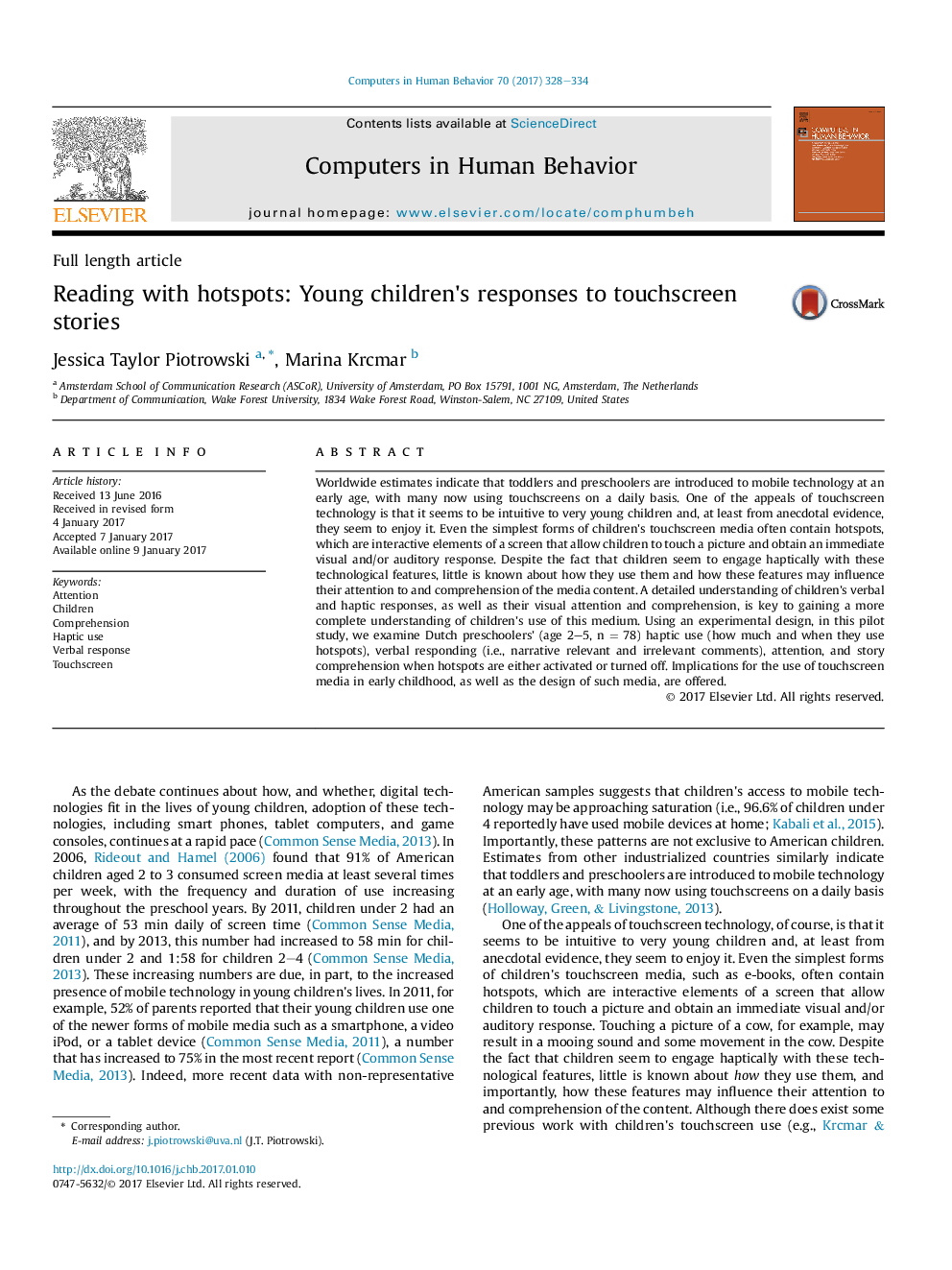| Article ID | Journal | Published Year | Pages | File Type |
|---|---|---|---|---|
| 4937302 | Computers in Human Behavior | 2017 | 7 Pages |
Abstract
Worldwide estimates indicate that toddlers and preschoolers are introduced to mobile technology at an early age, with many now using touchscreens on a daily basis. One of the appeals of touchscreen technology is that it seems to be intuitive to very young children and, at least from anecdotal evidence, they seem to enjoy it. Even the simplest forms of children's touchscreen media often contain hotspots, which are interactive elements of a screen that allow children to touch a picture and obtain an immediate visual and/or auditory response. Despite the fact that children seem to engage haptically with these technological features, little is known about how they use them and how these features may influence their attention to and comprehension of the media content. A detailed understanding of children's verbal and haptic responses, as well as their visual attention and comprehension, is key to gaining a more complete understanding of children's use of this medium. Using an experimental design, in this pilot study, we examine Dutch preschoolers' (age 2-5, n = 78) haptic use (how much and when they use hotspots), verbal responding (i.e., narrative relevant and irrelevant comments), attention, and story comprehension when hotspots are either activated or turned off. Implications for the use of touchscreen media in early childhood, as well as the design of such media, are offered.
Related Topics
Physical Sciences and Engineering
Computer Science
Computer Science Applications
Authors
Jessica Taylor Piotrowski, Marina Krcmar,
